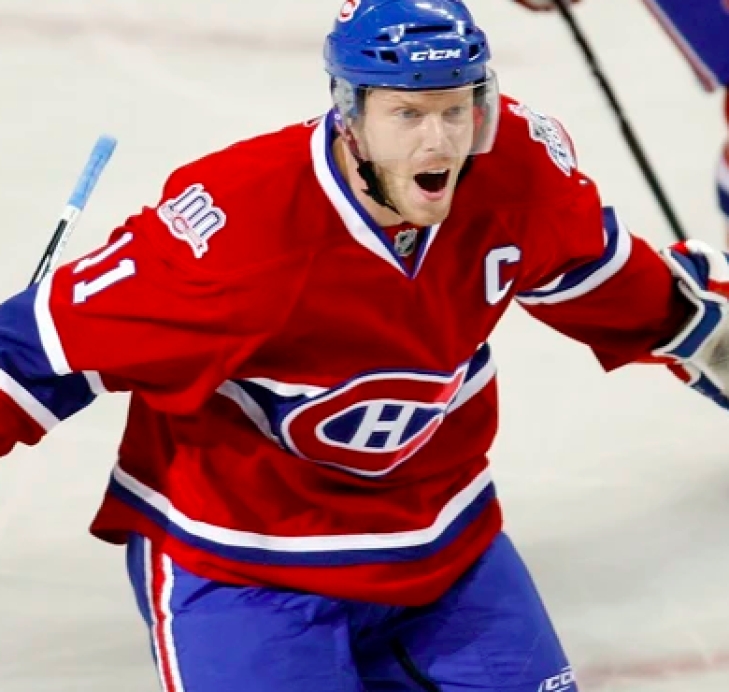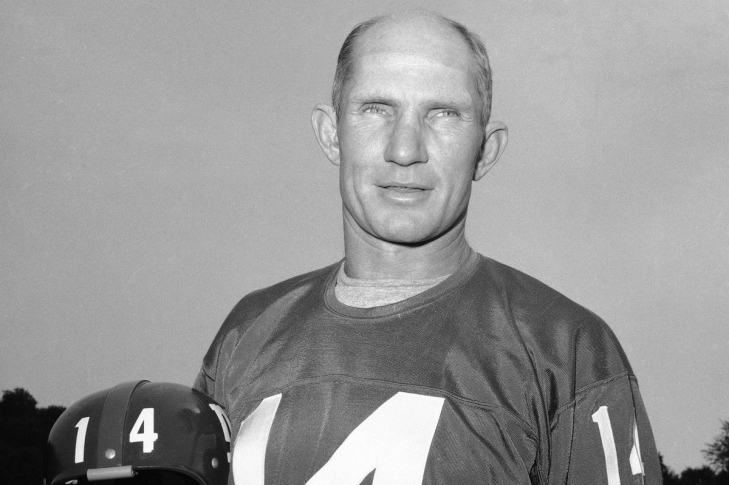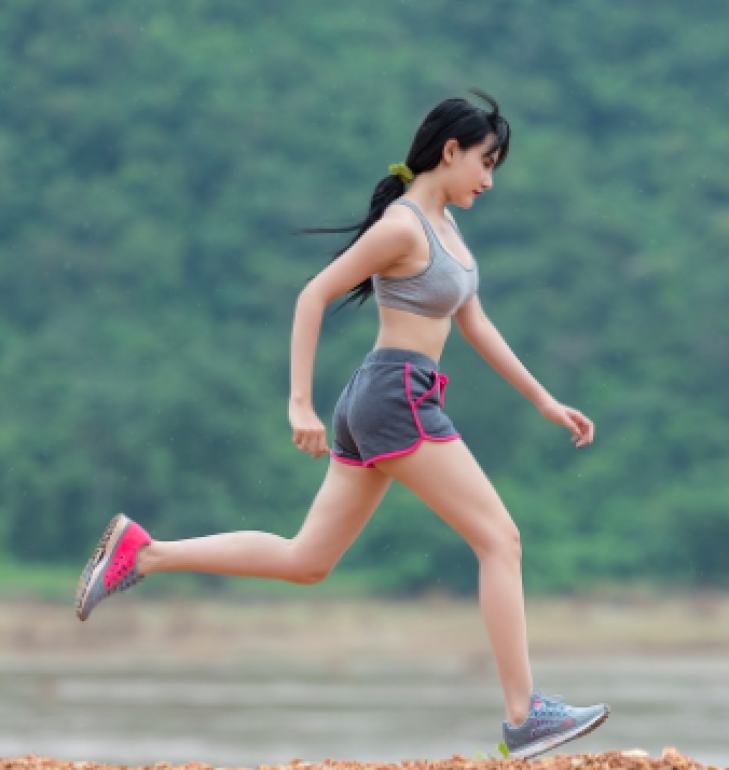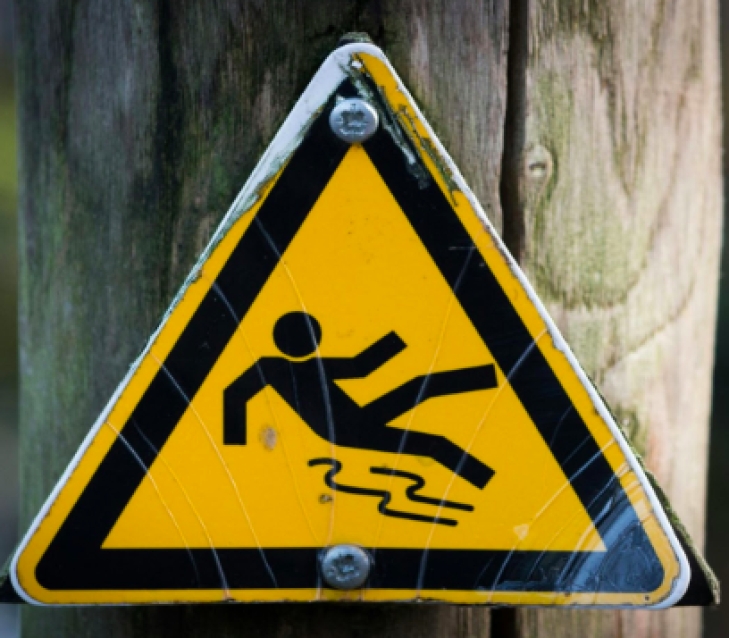
Committee Chairman
Our Notinhalloffame.com Hockey List is updated from 101 to 125
We continue to chip away at our revised Notinhalloffame.com Hockey list for the 2025 vote, and we have updated 101-125.
The entire list (albeit under construction) is here, but for your reference, here are the ranked players for Hocket Hall of Fame consideration from 101 to 125.
The players in question are:
101. Saku Koivu
102. Dustin Brown
103. Jean-Guy Talbot
104. Pierre Larouche
105. Milan Hejduk
106. Sid Smith
107. Pavol Demitra
108. Terry Harper
109. Dave “Tiger” Williams
110. John Ross Roach
111. Al Rollins
112. Steve Duchene
113. Garry Galley
114. Cecil Dillon
115. Jim Neilson
116. Brad McCrimmon
117. Evgeni Nabokov
118. Ziggy Palffy
119. Owen Nolan
120. Kirk Muller
121. Olaf Kolzig
122. Dennis Maruk
123. Ron Ellis
124. Ed Litzenberger
125. Bobby Rousseau
Look for more updates soon!
The Pro Football Hall of Fame Revisited Project: 1970 Final VOTE
1970 Pro Football Hall of Fame Revisited Project Class.
Here we are! Again!!
If you have been following our Pro Football Hall of Fame Revisited Project, you know we have asked the rhetorical question: What if the PFHOF began in January 1946?
After soliciting and obtaining a passionate group of football fans and historians, we sent out a ballot for a Preliminary Vote, in which we asked each voter to give us 25 names as their semi-finalists and 5 in the Senior Pool. We then asked the group to vote for their 15 Finalists in the Modern Era and 3 in the Senior Category. The final stage was to vote for their five Modern Era inductee and one Senior inductee.
This is the result of the 25th official class;
Below are the final results of this project based on 32 votes.
Remember that the group took a vote in “1970”, and we have reverted to the top five candidates entering the Hall, PROVIDING THEY MAKE 50% of the vote. This will be put to a vote again in “1972”.
This is for the “Modern Era”
*Bold indicates they have been elected to the Pro Football Hall of Fame Revisited Class of 1970:
|
Player |
Year of Eligibility |
Vote Total |
|
Y.A. Tittle QB |
1 |
28 |
|
Frank Gifford HB-FL-DB-WR |
1 |
23 |
|
Yale Lary DB-P |
1 |
21 |
|
Andy Robustelli DE |
1 |
21 |
|
Hugh McElhenney HB |
1 |
14 |
|
Mike McCormack T-G |
3 |
11 |
|
Pat Harder FB |
12 |
8 |
|
Alan Ameche FB |
5 |
6 |
|
Charlie Conerly QB |
4 |
6 |
|
Marshall Goldberg FB |
17 |
5 |
|
Ward Cuff WB-QB-HB |
18 |
4 |
|
Gene Lipscomb DT |
3 |
4 |
|
Buckets Goldenberg G-BB |
20 |
2 |
|
Tank Younger FB-LB-HB |
7 |
2 |
|
Bruno Banducci G |
11 |
1 |
This is for the “Senior Era”,
*Bold indicates they have been elected to the Pro Football Hall of Fame Revisited Class of 1970.
|
George Christensen |
7 |
16 |
|
Whizzer White |
4 |
6 |
|
Al Nesser |
13 |
4 |
|
None of the Above |
N/A |
6 |
This is for the “Coaches/Contributors”,
*Bold indicates they have been elected to the Pro Football Hall of Fame Revisited Class of 1970.
|
Paul Brown |
1 |
22 |
|
Bert Bell |
1 |
9 |
|
Buddy Parker |
1 |
1 |
About the 1970 Inductees:
Y.A. Tittle QB, BCL 1948-50, SFO 1951-60 & NYG 1961-62: Inducted in the Pro Football Hall of Fame Revisited Project in 1970 on his 1st Ballot. Inducted into the actual Pro Football Hall of Fame in 1971.
Beginning his career with the Baltimore Colts of the AAFC, Quarterback, Y.A. Tittle played 17 years of professional football. His accuracy and cerebral style of play, combined with his natural leadership skills, made him one of the best pivots of his day.
After the AAFC merged with the NFL, Tittle joined the San Francisco 49ers, and was one of the top Quarterbacks throughout the 1950s. Tittle was surprisingly traded to the New York Giants after being named the UPI MVP in 1957, and he would keep the Giants competitive while winning versions of the MVP in 1962 and 1963.
Frank Gifford HB-FL-DB-WR, NYG 1952-60 & 1962-64. Inducted in the Pro Football Hall of Fame Revisited Project in 1970 on his 1st Ballot. Inducted into the actual Pro Football Hall of Fame in 1977.
Frank Gifford was a former star at USC, and the Giants were lucky to grab him with their 11th Overall Pick in 1952.
Gifford played on both sides of the ball early in his career, but he would move mostly into an offensive role. Playing at Half Back, Gifford was a multi-threat player, and from 1953 to 1959, he was a Pro Bowl Selection, with four of those years earning a First Team All-Pro Selection.
His best season by far was 1956, where he had a career-high of 1,422 Yards from Scrimmage, which was enough to lead the NFL. That year, Gifford and the Giants would win the NFL Championship. Gifford had 9,870 All-Purpose Yards overall, an incredible total for his era. He also threw 14 Touchdown Passes, the most ever for a non-Quarterback.
Gifford’s career was derailed by a hit to the head from Chuck Bednarik took out 18 months of his career. He missed half of 1960 and all of 1961 but returned as a Flanker for three more years in the NFL.
A member of the 1950s All-Decade Team, Gifford’s #16 was retired by the team. He later became a successful broadcaster, commentating on Monday Night Football for 27 years.
Yale Lary DB-P, DET 1952-53 & 1956-64: Inducted in the Pro Football Hall of Fame Revisited Project in 1970 on his first Ballot. Inducted into the actual Pro Football Hall of Fame in 1979.
With the exception of two years serving his country, the multi-tasking Yale Lary played for the Detroit Lions from 1952 to 1964 and was a large part of the success of the organization’s success in the 1950s which brought Detroit three NFL Championships. The three-time NFL Champion was a five-time First Team All-Pro who was not just a Safety, but was exemplary as a Punter and a Returner.
Lary amassed 50 Interceptions, and 2,269 All-Purpose Yards and was a three-time league leader in Yards per Punt with 22,279 Punting Yards.
Andy Robustelli DE, RAM 1951-55 & NYG 1956-64. Inducted in the Pro Football Hall of Fame Revisited Project in 1970 on his 1st Ballot. Inducted into the actual Pro Football Hall of Fame in 1971.
From the tiny Arnold College, Andy Robustelli always seemed to be in a position to win on the professional level.
A two-time NFL Champion (one with the Rams and one with the Giants), the Defensive End appeared in eight NFL Championship Games, was a seven-time First Team All-Pro, and was the premier pass-rusher of his generation. Robustelli was exceptionally durable, only missing one game in his career, and was named the Bert Bell Award winner in 1962.
George Christensen G-T, PRT 1931-33 & DET 1934-38. Inducted in the Pro Football Hall of Fame Revisited Project in 1970 on his 7th Senior Ballot. Was never inducted into the actual Pro Football Hall of Fame.
A member of the 1930's All-Decade Team, George Christensen, was one of the better Tackles of the decade (obviously based on the above accolade).
Christensen signed with the Portsmouth Spartans in 1931 and stayed with the team as they relocated to Detroit to become the Lions in 1934. The Tackle would help Detroit win the NFL Championship in 1935, and he played his entire career with the organization, which spanned 95 Games.
Paul Brown Coach, CLE 1946-62 & CIN 1968-75. Inducted in the Pro Football Hall of Fame Revisited Project in 1970 on his 1st Coach/Contributors Ballot. Inducted into the actual Pro Football Hall of Fame in 1967.
Paul Brown received his first big league coaching opportunity with the Cleveland Browns of the All-American Football Conference, a new league with designs to challenge the NFL. Brown assembled a team full of players that he previously coached, and the Browns (named after him despite his objections) would win all four titles in the league's existence.
Paul Brown was a master strategist and innovator, creating the draw play and complicated routes for receivers. It was also from Brown's mind where the "pocket" derived, by which a quarterback is protected by his offensive line added precious seconds, allowing for greater protection and more high-potent offenses. A consummate professional, Brown was the first to have full-time assistants, and he developed his own scouting system.
The Browns and other AAFC teams were absorbed into the NFL in 1950, and the newer teams were not expected to challenge immediately for the NFL Championship. Brown did just that, winning in Cleveland's first year in the NFL and collecting two more titles in the 50s (1953 & 1954). As innovative and as brilliant as he was, some flaws would come to light by the early 60s.
Brown was considered cold and downright unfeeling by many of his players, and he did have a controlling nature. That would lead to his downfall and an acrimonious split between him and owner Art Modell. Brown was fired in 1962.
Six years later, Brown was a co-investor for a new NFL team, the Cincinnati Bengals, where he was their first head coach and general manager. Brown took the Bengals to the playoffs three times but never got a playoff win in Cincinnati. He retired after the 1975 season at age 67.
Love him or hate him, the game of football became exponentially better because Paul Brown was part of it.
5 Ways to Recover Like a Pro After a Setback
Setbacks are almost like a natural aspect of life that you cannot avoid. They can manifest as physical setbacks, professional obstacles, or personal difficulties. Whether they are leaders, musicians, or athletes, professionals know that healing is a talent that takes work and intention. It is not about ignoring the fall, but rather about gaining the strength to rise again. Here are five techniques recommended by experts that will help you recover stronger and more resilient if you're having a setback.
Stay Physically Active to Boost Your Recovery
Physical activity isn't only for athletes; it's a universal rehabilitation technique. Safe and proper exercise helps release endorphins, calm your mind, and keep you focused. For example, athletes recovering from injuries may begin with modest sports such as swimming or walking for fitness. A Personal Injury Attorney in Boise may be required if the injury is severe to claim compensation for the time and money lost.
Even simple exercises, such as stretching or yoga, can lift your mood and give you a sense of success. Remember, the idea is to customize your activity to your circumstances—consistency is more important than intensity in this instance.
Embrace the Power of Rest and Reflection
One of the most crucial phases in the healing process is pausing to think things through. Resting means making room for rebuilding, not giving up. It allows your body and mind to recover, while self-examination helps you understand what went wrong. During this phase, consider what you hope to gain from the experience. Just take some time to think about the adjustments you must make to get clarity and purpose.
Build a Strong Support System
It is difficult to recover on your own, which is why having a good support system is crucial. Whether it's family, friends, or mentors, having people who believe in you can make all the difference. Many musicians have said that their closest confidants helped them handle personal and professional challenges. Surrounding yourself with positive influences not only increases your spirits but also provides useful advice and encouragement. If necessary, try joining a group or seeking professional help—having the right support may be life-changing during challenging times.
Focus on Small, Achievable Goals
The idea of taking on a significant task can be daunting following a setback. That's why it's so effective to create tiny, achievable goals. Athletes recovering from an injury frequently take pride in small victories, such as restoring flexibility or finishing quick workouts. These little victories give motivation and boost confidence. This also applies to personal or professional setbacks; breaking down big goals into smaller ones helps them seem more doable. No matter how tiny the step is, remember that every personal achievement puts you one step closer to your final objective.
Conclusion
How you bounce back from setbacks defines who you are. Remember that every step you take will get you one step closer to your next big comeback. Start small and be consistent; before you know it, you'll return on the horse.
What Are the Causes of Slip and Fall Accidents?
Wet and Slippery Floors
Wet or slippery flooring ranks among the most common sources of slip-and-fall accidents. Spills, newly mopped surfaces, or leaks are all possible slipping hazards that must be cleaned up immediately to avoid accidents. Business owners and property owners must mark wet areas with clear warning signs or clean up the spills right away to lessen the likelihood of an accident happening. Slippery floors in malls or restaurants often give rise to claims. In case the property owners fail to maintain safe conditions, they can be held liable for any injury that results from negligence. You may need an attorney like Blackburn Romey to assist you if you have slipped because of an unsafe premise.
Unlevel Surfaces and Unsecured Flooring
Other leading causes of slipping include uneven surfaces such as:
- Cracked sidewalks
- Potholes
- Loose tiles
These are very hazardous, especially in those areas that are not well lit where they may not be seen immediately. The owners of the property are responsible for making sure that irregularities are marked or repaired to make it safe for visitors. Lack of these may lead to severe injuries and possible cases in court. Most of these could have been prevented by better routine maintenance and inspection.
Poor Lighting
Poor lighting is a contributing factor in many slip-and-fall cases. When hallways, stairwells, and parking lots are not well-lit, it's difficult for people to see impending dangers. Property managers need to ensure that the lighting is adequate and functional, especially in high-traffic areas. Sometimes just simple things, like replacing burnt bulbs or adding more light fixtures, can make a world of difference in preventing accidents.
Weather-Related Hazards
Weather conditions, like rain, snow, or ice, are other additional risks for slip-and-fall accidents. This includes outdoor surfaces such as sidewalks, parking lots, and entryways, which become so treacherous during the winter months. Property owners have a duty to take reasonable steps to reduce the risk of weather-related hazards. This may include salting icy areas, shoveling snow, and placing mats at entrances to absorb moisture. Failure to do so may make property owners responsible for an injury.
Improper Footwear
Most slips and falls are a result of the hazard in properties, while the choice of footwear further enhances one's tendency to slip down due to poor grip or highly heeled shoes on a smooth or wet surface area. Dress codes established for job places could assist employers in bringing down workplace injuries and insist employees in specified areas prone to slipping hazards wear non-slipping footwear – for example, in kitchens, warehouses, and so forth.
Lack of Handrails or Safety Features
Handrails, guardrails, and other safety features are very crucial in preventing accidents both on stairs and high platforms. Their absence or being in disrepair is very dangerous, especially to people who have problems with mobility. Most building codes require such features for public safety, but property owners are supposed to maintain them periodically to ensure no accidents happen due to negligence.





